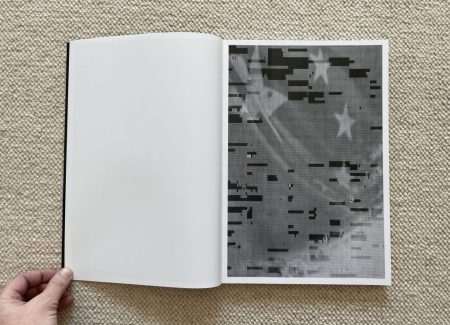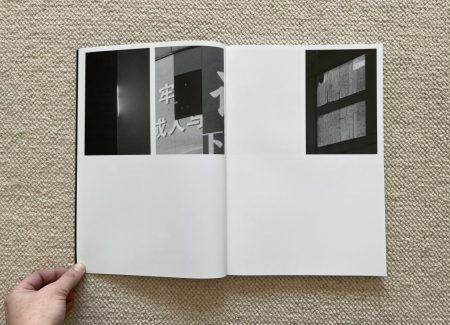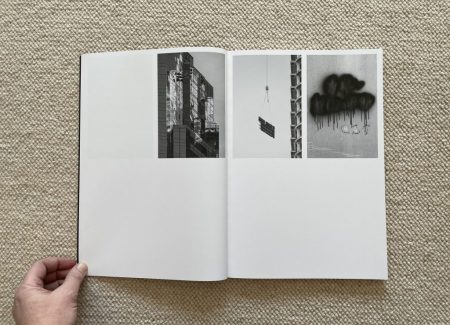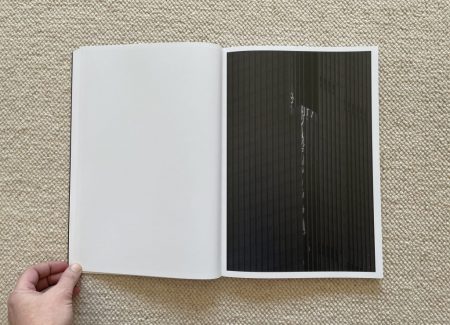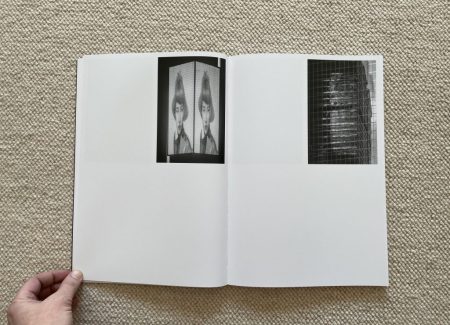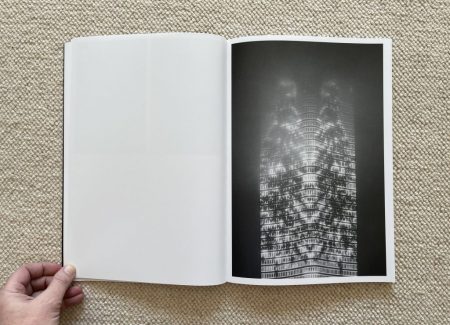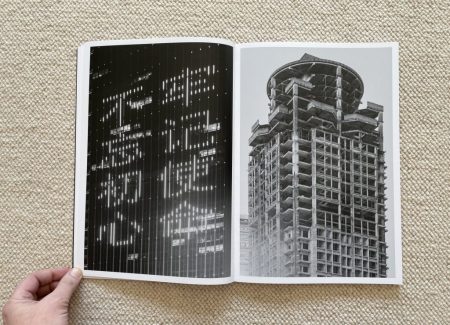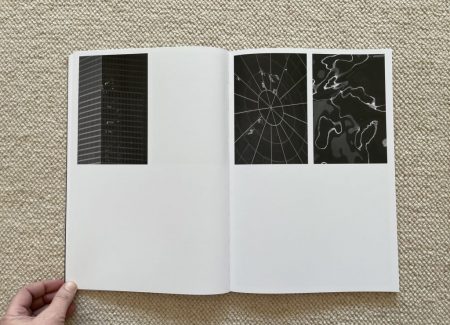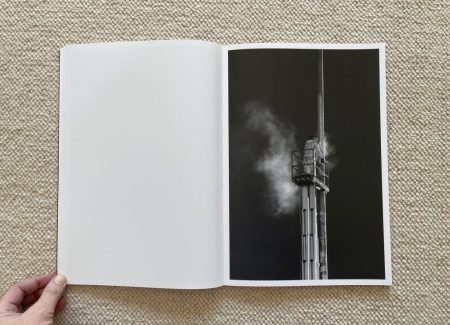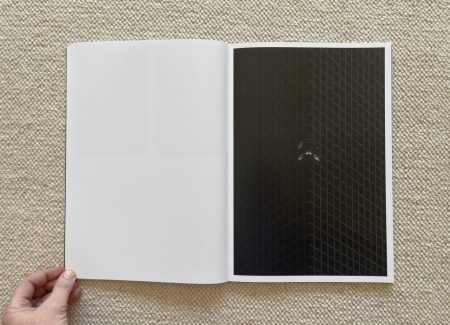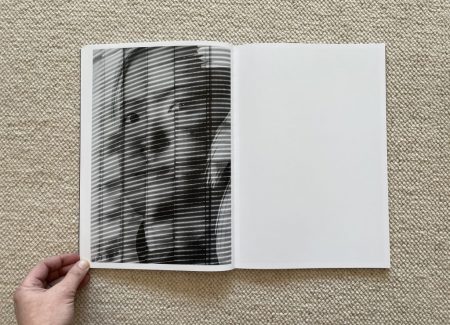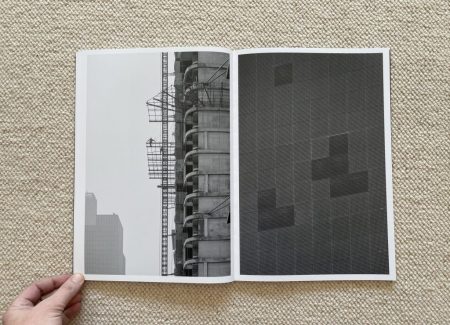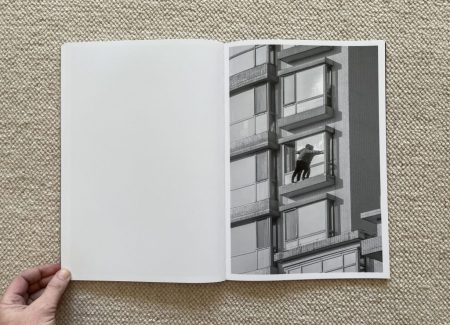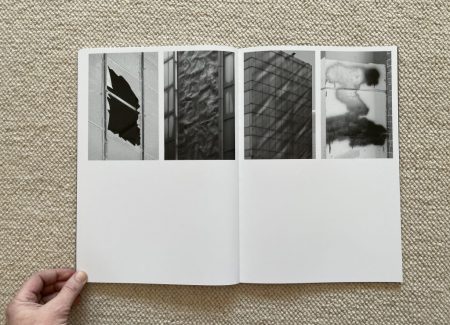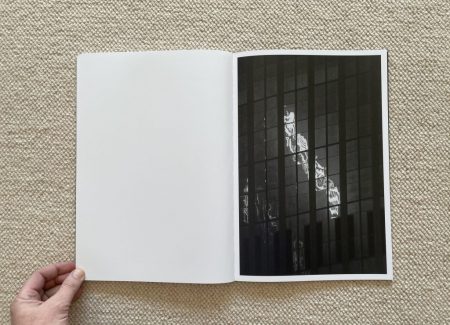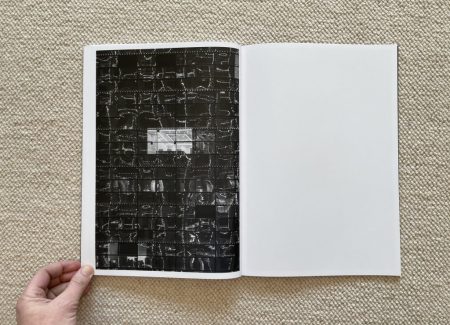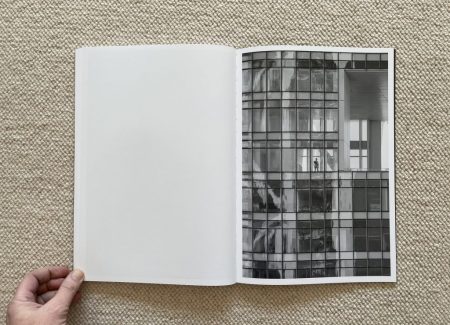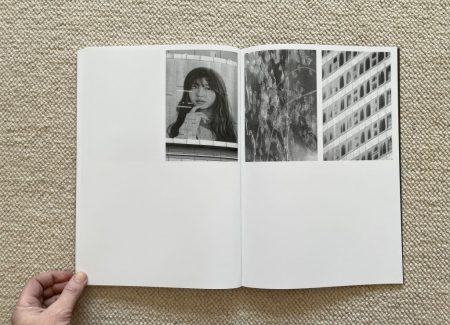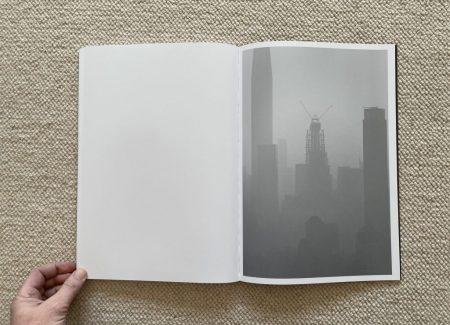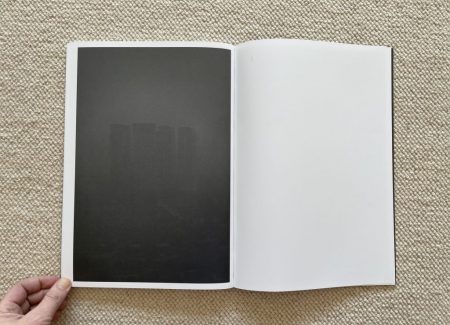JTF (just the facts): Published in 2020 by Loose Joints (here). OTA-bound embossed softcover (23.3 x 34 cm), 168 pages, with 127 tritone plates. There are no texts or essays included. (Cover and spread shots below.)
Comments/Context: In the past decade, if you were an architect who designed skyscrapers and major office towers, the odds are you were doing most (if not all) of your work in China. Of course, new skyscrapers are also being built, from time to time, in the rest of the world’s major cities, but the scale of the new construction effort in China in recent years dwarfs those scattered projects. With dozens of very large Chinese cities all transforming themselves into modern metropolises at essentially the same time, the building boom has changed skylines seemingly overnight, and ushered in new ways of living and working for those now inhabiting these massive glass and steel boxes.
The Swedish photographer Mårten Lange is particularly well suited to unpacking the complexities of such widespread futurism. His excellent 2017 photobook The Mechanism (reviewed here) probed many of the challenges that come along with this wholesale reinvention of living, from pervasive surveillance to the prevalence of anonymous non-places that don’t accommodate people very well. His images sensed the ominous oppressions and isolations of perfect geometries and imaginatively documented the miscommunications and failed automations of these new spaces.
In China’s wave of new construction, Lange has found a real life dystopia-in-the-making to examine and unravel. Many of the buildings are indeed architectural marvels, with sleek silhouettes, elegant lines, curved edges, and soaring forms that seem to jump to extreme heights. But Lange isn’t an architectural photographer in the traditional sense – while he does feature signature buildings and notable details in many of his pictures, he’s primarily studying how the buildings operate in their surroundings, how they are aging, and how daily use by people is disrupting the controlled perfection of their designs.
From afar, the buildings in Lange’s photographs largely dissolve into the surrounding soup of smog and pollution. In some cases, the murky darkness is so pervasive that day seems to turn to night; in a few, the sun itself is essentially blotted out, becoming a white dot in an otherwise impenetrable mist. Even the most brightly lit and dazzlingly sharp forms struggle to emerge from this engulfing gloom, their power to inspire seemingly muted by the grim environment.
When the smog does dissipate a bit and the sun breaks through, Lange discovers a fascinating array of flares of light that dance across the surfaces of the towers. Many are momentary sparkles or glints off of glass, but others shine and shimmer in ways the feel like they might be trying to communicate something to us. Futuristic light patterns decorate a few buildings, and in others, the light turns abstract, shimmering and waving into more amorphous forms and zig zags. Lange consistently sees potential mystery in these lights, with interruptions, distortions, and tiny aberrations feeling like codes, or perhaps the flickers of ghosts in the machine. A few lonely puffs of smoke and stranded cloud forms offer a similar sense of the uncertain, as if the usually all encompassing systems of control have broken down for just an instant.
When he starts to look closer, Lange discovers a whole world of imperfections hiding right on the surface. The huge faces that peer down from video screens like something out of Blade Runner might normally feel alternately surreal and oppressive, but given the glitching video and blocky broken pixels that interrupt the faces, the omniscient Big Brother presence isn’t quite as intimidating. The same might be said for the digital clock with too many hands, the damaged windows and puckered panels being replaced, and the pervasive clouds of black paint that try to hide the mushrooming presence of graffiti. When we squint our eyes, these buildings amaze us with their precision, but up close, they are filled with the same cracks, peeling paint, puddles, drips, left over scaffolding, abandoned cement blocks, and padlocked doors that haunt many new construction projects.
While these new buildings are designed to house thousands of workers, Lange finds only intermittent traces of human presence, and often just indirect ones. He discovers a few handprints and footprints on dusty walls and wet pavement, and captures a few lone windows lit up at night, breaking up the perfect geometries of the darkened forms, as though occupied by the unseen. Long lines of car headlights lined up across bridges attest to the presence of the population, but the scale of the new places seems too large for the tiny ant people that occupy them. Massive paved plazas reduce the humans to dots and slashes, and endless escalators move people up and down with similar anonymity. In just a few pictures, Lange actually captures a single identifiable human in these buildings – a man painting a spire, another working on high precarious scaffolding, and a third silhouetted figure in skyscraper window – but these moments are few and far between. In one other memorable photograph, a man clutches to the molding outside a window like he is trying to reach to paint the far edge of the sill, but it’s not at all clear whether he might not be trying to escape or even jump.
Ghost Witness is a decently large photobook, which gives Lange’s photographs the heft they need to help us feel the immense scale of his subjects. All of his photographs are vertically oriented, some filling one side of a spread to thin white borders, others taking up the quadrants of a page in singles and pairs. The resulting page turns move from large to small and back again in different combinations with the same kind of controlled ordering that is found on the skins of the skyscrapers. The front and back covers are particularly eerie, as they reverse the tonalities of the images, creating a wisp of dark smoke rising from a building and a black sun rising in the hazy sky.
Seen as one integrated visual flow, the photographs in Ghost Witness successfully create a mood of uneasiness, and Lange offers us the option to attribute that tension to spooky presences, while still grounding us in the realities of expansion-hungry contemporary China. The new buildings are seemingly sprouting up overnight, each more futuristic than the last, but cracks in the façade of perfection are also appearing. Lange’s photographs draw us into that keyed up, overwrought struggle, offering a compelling, smog-choked glimpse of the growing pains of a new kind of world.
Collector’s POV: Mårten Lange is represented by Robert Morat Galerie in Berlin (here). His work has not yet reached the secondary markets with any regularity, so gallery retail likely remains the best option for those collectors interested in following up.



